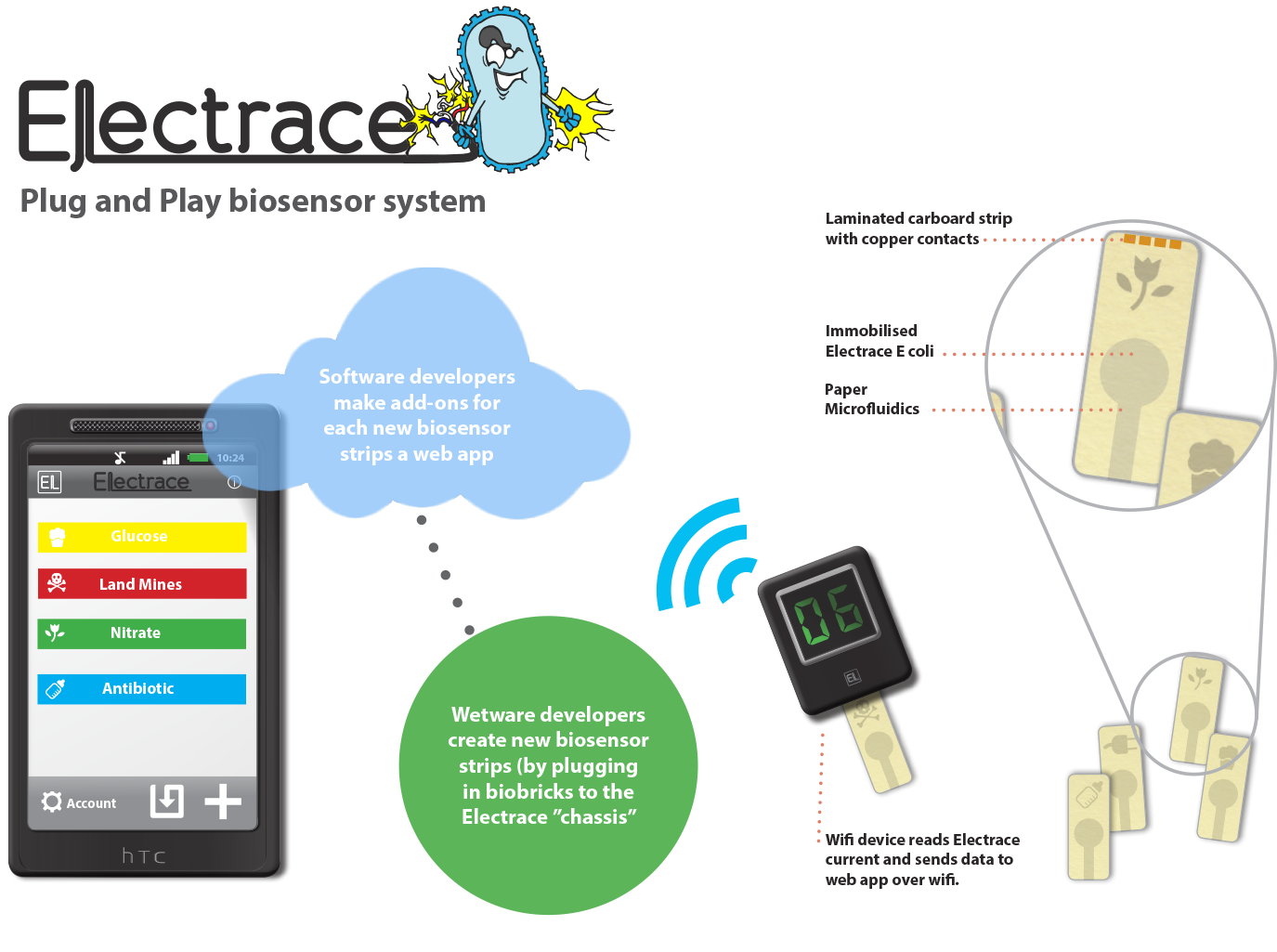Team:TU Delft-Leiden/Project
From 2014.igem.org
The Project – ELECTRACE
The goal of our project ELECTRACE is to develop a microbial sensor, responding to a signal by emitting an electrical output. In contrast to conventional outputs, Electrace supports accurate and low effort measurements. To facilitate an electrical output and thus electron transport, we will integrate three independent modules in the model organism E. coli.
For the module ELECTRON TRANSPORT, we will integrate the Mtr system of metal-reducing bacterium Shewanella oneidensis in E. coli. Upon induction, the transmembrane MtrCAB protein complex will be formed, which will enable the bacterium to transport electrons to the extracellular environment, generating a measurable current output. To optimize this system, the intricate protein complex formation process will be modeled. Also, flux balance analysis will be employed to investigate the source of the electrons, the E. coli carbon metabolism.
The module CONDUCTIVE CURLI will consist of the inducible formation of extracellular amyloids called curli. These curli will be made conductive via the addition of gold nano particles. In this way, the conductivity of the extracellular environment will rise. This will not only be easily measurable by itself, but will, in combination with the electron transport module, also result in enhanced extracellular electron transport. On a bacterial level, the formation of the curli will be modeled. On a colony level, we will use percolation theory to model the change in conductivity of the extracellular environment.
Aforementioned modules are not dependent on a specific type of induction and are therefore a plug-and-play system to which every inducible (biosensor) promoter can be added. However, as a proof of principle, for the module LANDMINE DETECTION we will develop a promoter, inducible by landmine compounds TNT, DNT and DNB. We will try to obtain a model description of the unknown induction mechanism of this promoter. To make our landmine detection system meet the requirements of the possible users, we have discussions with various organizations involved in landmines such as demining organizations and anti-landmine NGOs.
To test the modules, we will make use of a self-developed MICROFLUIDICS DEVICE. For the electronic measurements of the first two modules, we will develop our own potentiostat. We will make a handheld biosensor device, consisting of our microbial system, so the electron transport and conductive curli modules activated by the landmine promoter, placed in a paper microfluidics setup, and our potentiostat. This small and inexpensive device will make it possible to use our landmine biosensor in the field. As the landmine promoter can be easily replaced with other biosensors, our system will greatly enhance the application of biosensors, since expensive and cumbersome lab equipment is no longer needed.

 "
"






